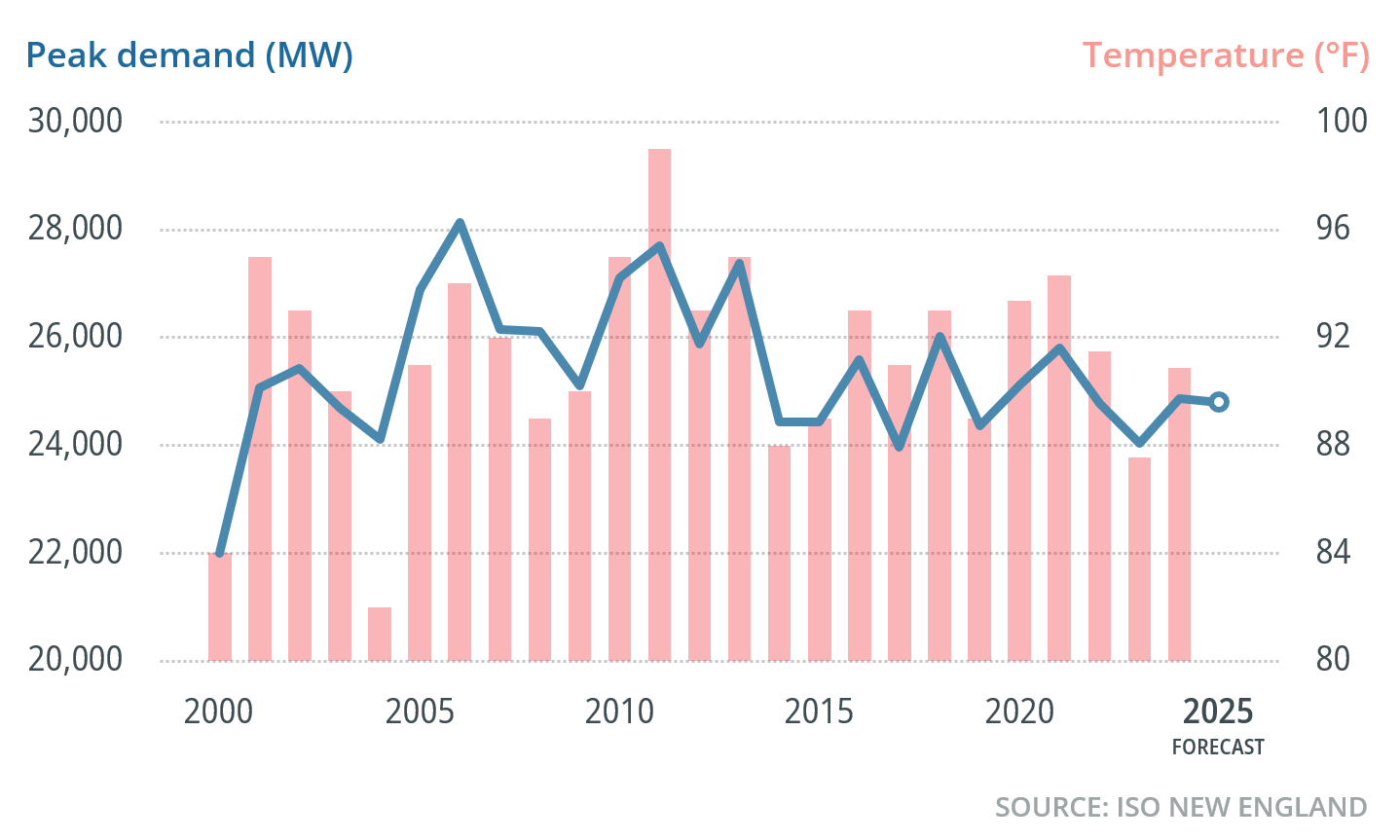

ISO New England, operator of the region’s electric grid, expects sufficient energy supply to meet consumer demand for electricity this summer.

Several consecutive days of hot and humid weather, loss of generation, or other factors could cause periods of tight supply margins.
ISO New England grid operators undergo rigorous training to ensure the reliability of the grid. They have numerous tools to balance load, including increasing production of online generation, dispatching stand-by units, requesting maintenance be deferred, increasing imports, and voluntary reductions of energy use and other energy conserving measures.
Peak demand forecast, typical weather
Peak demand forecast,
above average weather
Approximate available capacity expected
All-time highest summer
peak demand
(set on August 2, 2006)
“Summer really comes down to the weather, it directly drives system demand.”
Watch the video to learn more about how the ISO prepares for the summer season.
Weather is the largest driver of energy use, and the National Oceanic and Atmospheric Administration (NOAA) is predicting warmer than normal temperatures in New England this summer, and precipitation above normal in most of New England, except for northern Maine.
Since 2005, demand has remained relatively stable mainly due to an increase in energy efficiency technologies and the increased prevalence of behind-the-meter solar generation. ISO New England assessments show the region can expect to have adequate supply to meet consumer demand and required reserves this summer.

Behind-the-meter solar photovoltaic installations (BTM PV) are a growing source of energy in the region and predicted to reduce demand by as much as 1,736 MW during the peak hour of demand on days with normal weather conditions.
Instead of peaking in the mid-afternoon, as was common during summers before widespread solar panel installations, New England grid demand now peaks in the early evening hours. The region has approximately 7,800 MW of BTM PV which effectively pushes the peak hour of grid demand later in the day, when the sun is lower in the sky and production from solar PV systems is reduced.

| 1 | Implement Power Caution and begin to allow depletion of 30-minute reserves |
| 2 | Declare Energy Emergency Alert (EEA) Level 1 |
| 3 | Request voluntary load curtailment of market participants’ facilities |
| 4 | Implement Power Watch, a notification that additional OP 4 Actions may be taken; if conditions warrant, issue a public appeal for voluntary conservation |
| 5 | Schedule Emergency Energy Transactions and arrange to purchase energy and capacity from other control areas |
| 6 | Implement voltage reductions of 5% of normal operating voltage requiring more than 10 minutes Declare Energy Emergency Alert (EEA) Level 2 |
| 7 | Request resources without a capacity supply obligation to provide energy for reliability purposes |
| 8 | Implement a voltage reduction of 5% of normal operating voltage requiring 10 minutes or less |
| 9 | Request activation of transmission customer generation not contractually available to market participants during a capacity deficiency, and request voluntary load curtailment by large industrial and commercial customers |
| 10 | Implement Power Warning and issue urgent public appeal for voluntary conservation |
| 11 | Request state governors’ support for ISO appeals for conservation |